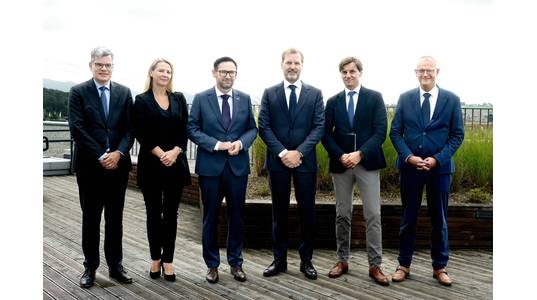
Norwegian carbon storage specialist Horisont Energi and the oil and gas firm PGNiG Upstream Norway (PUN), part of Poland-based ORLEN Group, have signed a Letter of Intent (LoI) whereby PUN aims to enter as partner and operator in the only CO2 licence in the Barents Sea - Polaris.
The CO2 exploration licence EXL003, with the project name Polaris Licence, is currently fully controlled by Horisont Energi.
The LoI lays the ground for clearing formalities with authorities necessary for PUN to become the operator and acquire a participating interest in the Polaris Licence, Horisont Energi said, adding that the process of onboarding PUN is expected to be completed by early December 2023.
The Polaris project is the ORLEN Group’s first intended CO2 license anywhere.
“Joining forces with PGNiG Upstream Norway is an important milestone in our quest to achieve significant emission reductions and contribute to the emerging CCS industry. PGNiG Upstream Norway is a robust and qualified partner with ample operatorship and offshore experience from the Norwegian Continental Shelf. The new partnership should also help advance our Barents Blue clean ammonia project by providing accessible CO2 storage capacity. We are excited to join forces with an experienced and accomplished team,” says Bjørgulf Haukelidsæter Eidesen, CEO of Horisont Energi.
PUN as partner and operator in Polaris is an important third key element for Horisont Energi over the last months, the Norwegian company said.
The first element was to secure the power supply for the planned Barents Blue ammonia plant in Northern Norway in June.
The second element was the 50/50 joint development agreement signed with the European fertilizer company Fertiberia in late August for the joint development of the Barents Blue ammonia plant.
The LoI with PUN covers the Polaris Licence.
Daniel Obajtek, CEO and President of the ORLEN Management Board said. “Efficient and safe storage of carbon dioxide is key to maintaining the competitiveness of industries that are exposed to high emission costs. Cement, steel and fertilizers producers, if they want to continue operating in Poland, or more broadly in the European Union, must find a way to manage carbon dioxide emissions. In line with the ORLEN Group's strategy, over the next few years we will build strong competence in the area of carbon management. The expertise we wish to gather partnering with Horisont Energi on the Polaris project will also be used in Poland. It will allow us to effectively implement proven and safe technologies of CO2 storage and prepare a competitive offer of carbon management for Polish industry.”
Although a preferred CO2 storage solution for the Barents Blue project, the Polaris Licence is expected to provide additional storage volumes for other CO2 customers, Horisont Energi said.
A PUN partnership would follow suit to the European energy majorE.ON’s and Horisont Energi’s prolonged and extended partnership to develop a European CCS value chain, Horisont Energi added.
“We are very proud to be a pioneer in the field of industrial CO2 circular economy together with Horisont Energi. For our industrial customers the Polaris project can play a key role in achieving their net zero targets. As a partner to our customers, we stand ready to shape this path” says Patrick Lammers, Member if the Management Board and Chief Operating Officer Commercial, E.ON SE.
E.ON and Horisont Energi have previously signed a Letter of Intent for the storage of about one million tonnes of CO2 in the Polaris licence.
Together with the two million tonnes of CO2 annually from the Barents Blue ammonia plant and additional CO2 volumes in Northern Norway, there is a substantial commercial basis for the development of the Polaris Licence.
The planning of the Polaris CO2 storage started in February 2020 and, upon application to the authorities, was formally awarded in June 2022. The Polaris licence is expected to provide the necessary storage capacity for Barents Blue, with additional storage capacity expected for other CO2 customers in Norway and Europe.
Type of reservoir: Saline aquifer, i.e. a water-bearing reservoir
Geographical position: In the Norwegian part of the Barents Sea, 140 km off Hammerfest, Norway
Area of closure: 350 km2
Reservoir depth: The structural apex of the reservoir 1400 m TVDSS (true vertical depth below sea level)
Water depth: 250 m
Reservoir thickness: 90 m
Related:
Horisont Energi: The North Star Of Offshore Carbon Capture And Storage